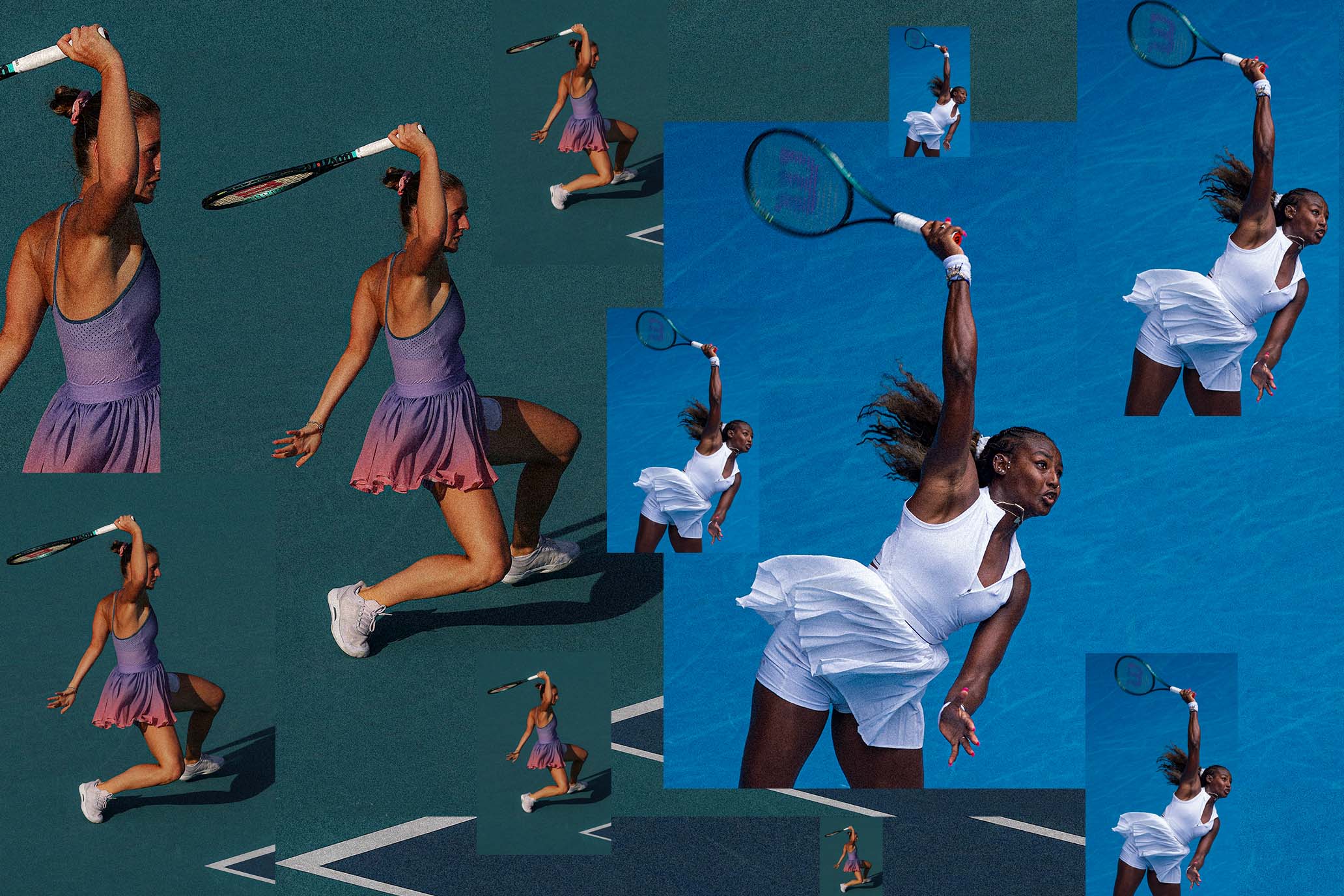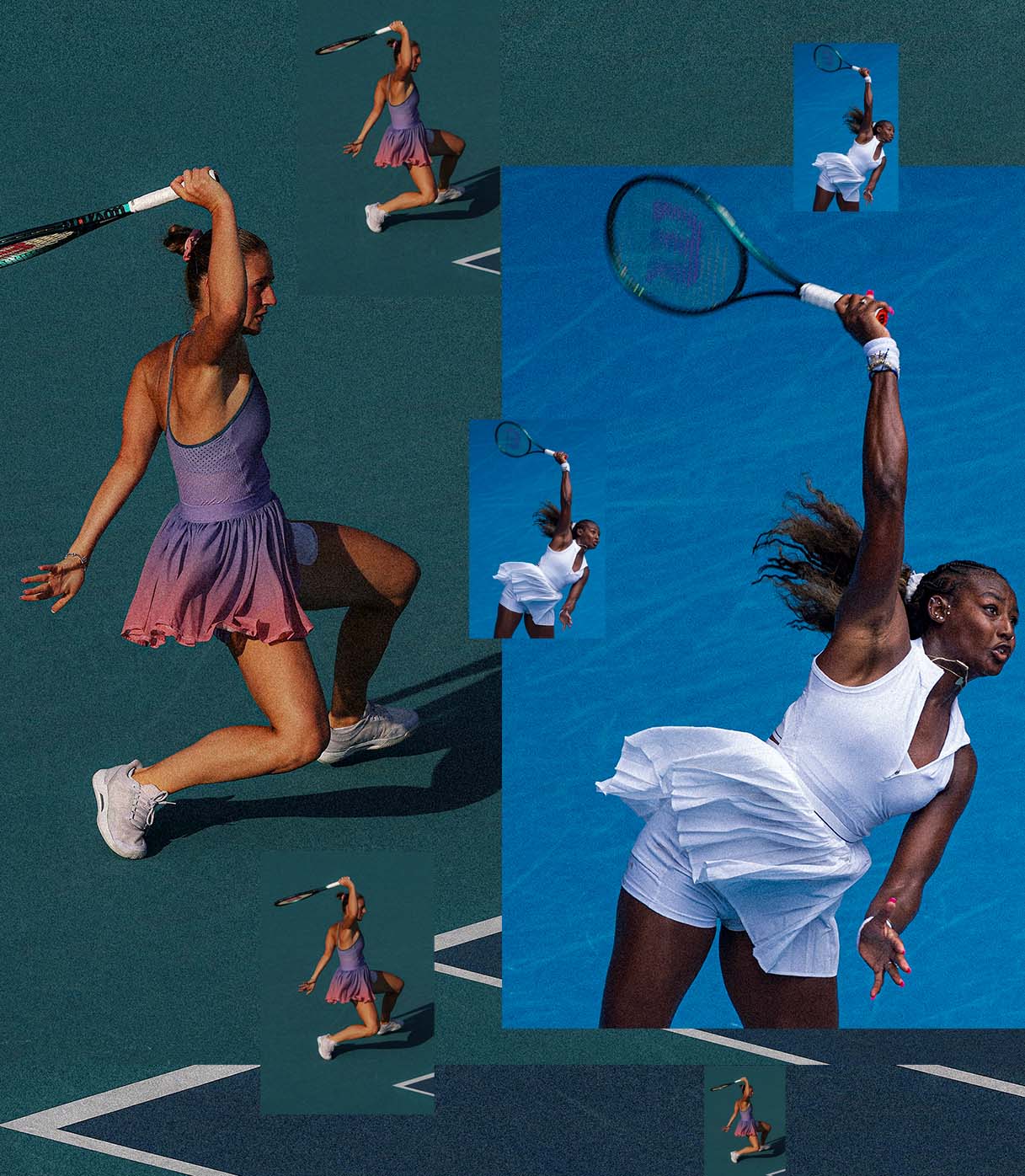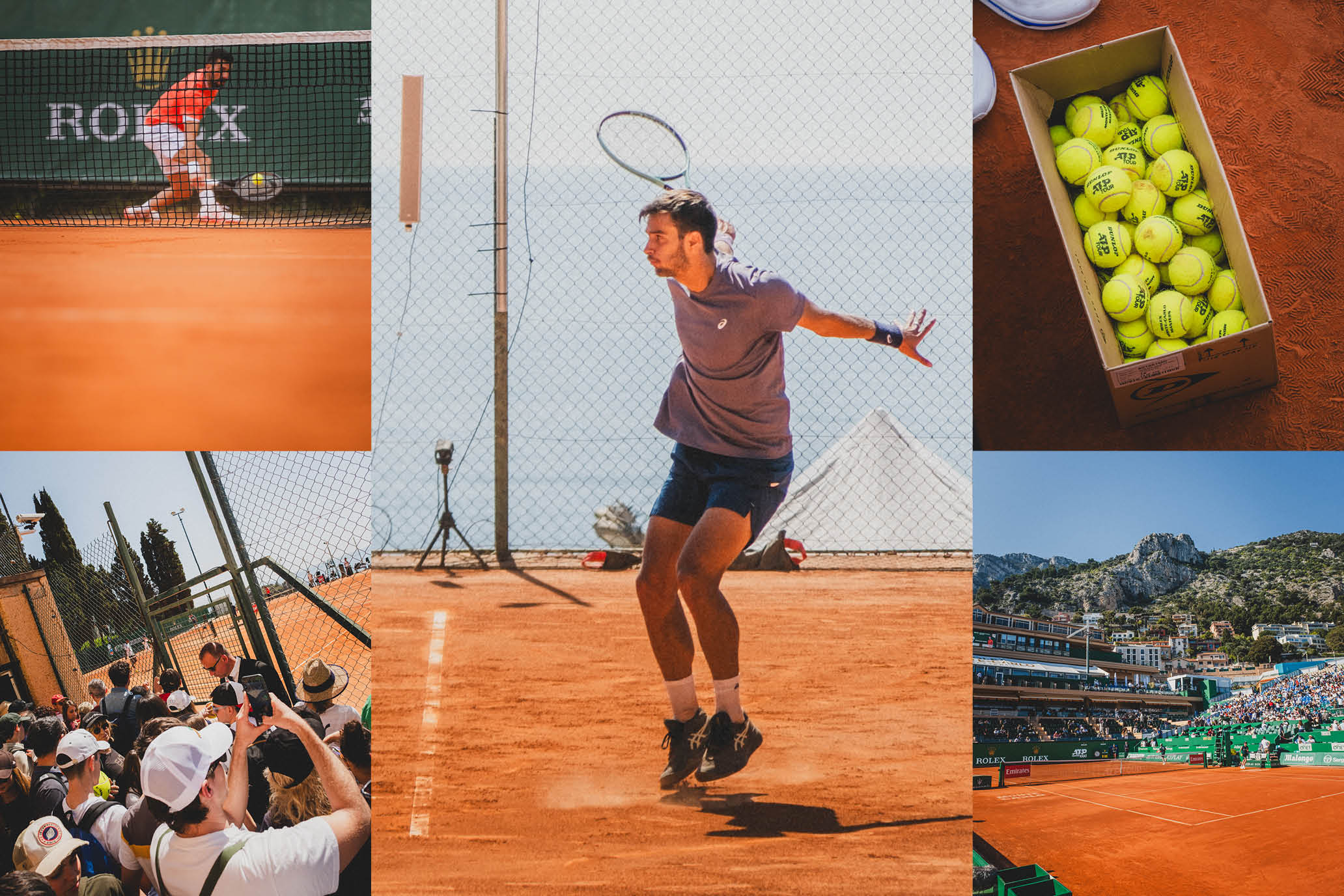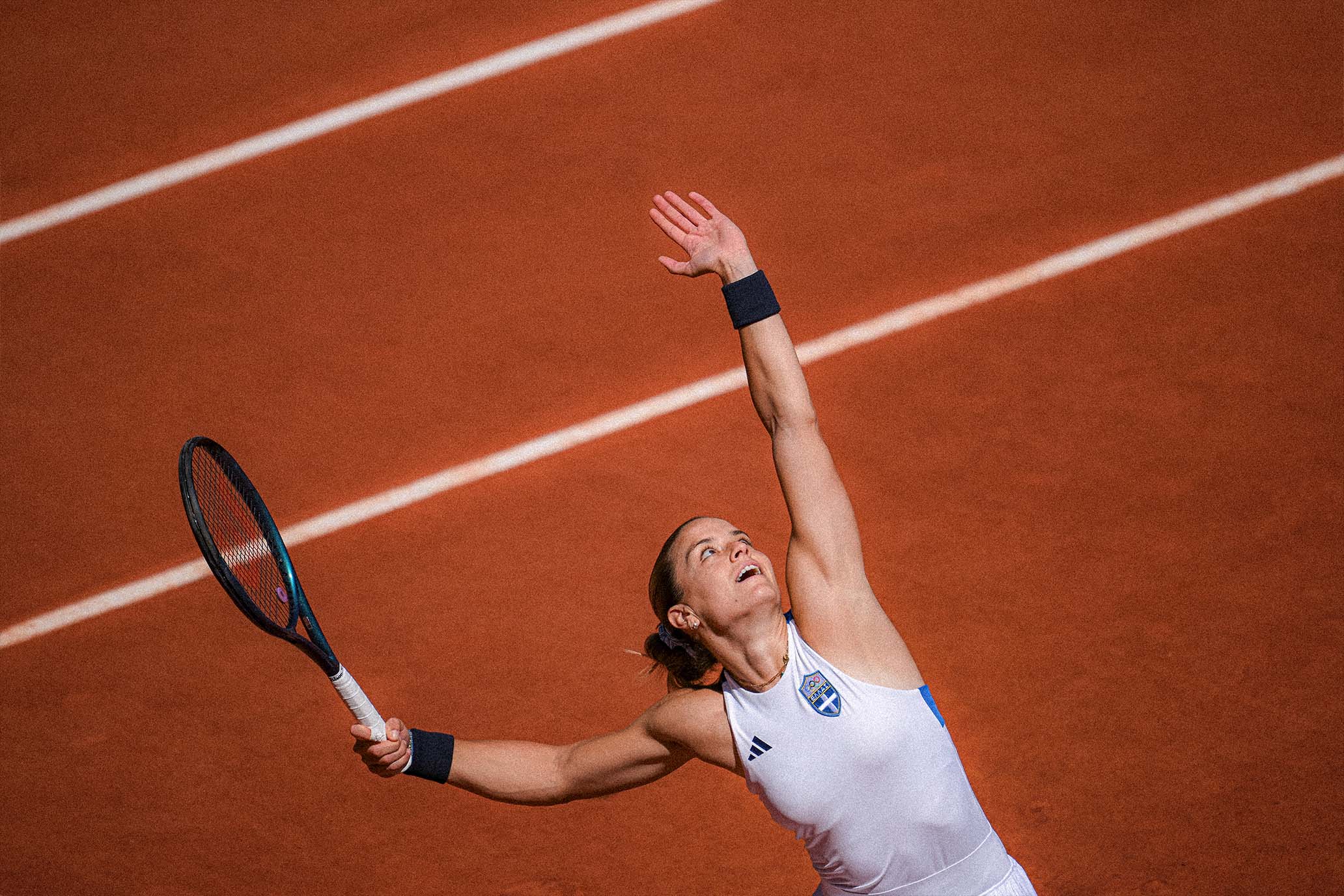Performance First
Performance First
How Wilson creative director Joelle Michaeloff used “stealth technology” to make fashion forward tennis clothes.
How Wilson creative director Joelle Michaeloff used “stealth technology” to make fashion forward tennis clothes.
By Tim NewcombApril 18, 2025

Marta Kostyuk and Alycia Parks representing Wilson dresses. // Getty

Marta Kostyuk and Alycia Parks representing Wilson dresses. // Getty
At more than 110 years old, Wilson sure is showing serious spunk. One of the oldest American sportswear brands out there launched tennis fashion anew five years ago behind the creative direction of Joelle Michaeloff, a veteran of brands such as Lululemon, Urban Outfitters and Spiritual Gangster. The fashion-forward nature of the designs—both on the professional tours with the likes of Marta Kostyuk and Alycia Parks and for the playing masses—has pushed Wilson past the idea of an equipment-only company and into a tennis style leader.
That was all so very intentional.
The Second Serve’s Tim Newcomb connected with Michaeloff, Wilson’s head of design, who launched the brand’s efforts in what has become one of the hottest fashion-forward forays in tennis in the past few years. Here she shares the strategy behind Wilson Sportswear.
How did Wilson’s history as an equipment maker impact the launch of Sportswear?
The only reason we are here is the equipment. We needed the equipment. For 110 years we have been making the best equipment in sport, and without that we would have also had to prove our innovation and prove we were technical. There are all sorts of things a new brand would have to prove, but this was Wilson, of course it would work.
How did that equipment mantra impact the fashion side?
For the fashion and style aspect of it, at the very beginning [Wilson Sportswear president] Gordon [Devin] asked me if we were to partner with someone to get this going as fast as humanly possible, what would I do and who would be the partner? I made a short list of people in fashion who had adjacency in sport to help validate what we were building from a style perspective. That’s why in 2021 we launched with Kith. [Kith founder] Ronnie Fieg has been a long-term adviser in terms of culture and style and coming at it from a different point of view than myself. I have grown up in fashion, technology, and athleisure, but Ronnie brought in a lifestyle perspective from an affluent, cooler consumer. I think that really helped to push and validate Wilson.
How did Wilson technology play a role?
Because we set out to always build beautiful product with innovation—what we call stealth technology—we set out to make it look good first and foremost, and at that time it was really missing in the market. What Wilson was able to make [apparel] look and feel like wasn’t happening at the time, and it set a groundwork for Wilson to create this. It felt natural—I’m biased, right?—but if you were to think what is Wilson going to create, it is technical and beautiful.
What was your strategy for tennis?
No. 1, we wanted to be meaningful to someone. We could have gone extremely broad—our first collection in 2020 was broad, and we threw a lot of spaghetti at the wall to see what would stick—but because of our position in tennis with equipment, we wanted to home in on tennis, especially since the appetite was there from the consumer, and the athlete was telling us to be there. We set out to win with women. We were already winning with men, so really focusing on women was another sort of risk. Women didn’t already have a place that was natural with Wilson, we just weren’t there yet. We set out to be technical and innovative first, but we didn’t want to look that way, we didn’t want to look techy. We were performance first and foremost just like the equipment but wanted to honor our past and bring it into the modern day. All of those things were top of mind.
How did that work out?
What’s crazy is out of the gate we were winning with women. We set out to do it and we did it. We are 60 to 70 percent women from a sales perspective, and that has pushed us to develop larger collections. We wanted to surprise and delight women, wanted to continue to build confidence for men (it takes longer to get a male consumer). Eventually the goal is to get closer to 50-50, but because the strategy is to win with women, I see us always being 60-40.
Why do you think you’ve had that success?
Wilson is an incredible brand. When I talk to anyone at any age, any generation, everyone has a story. When I tell people I work for Wilson, their faces light up. It is a loved American sports brand. That is a gift. I can’t believe I get to do this. There are not that many brands this old that at some point in their journey didn’t stay true to who they were or had a pivot point where they followed markets or trends. Wilson has been steady and true to the athlete, been an ally of the athlete since day one. I do feel the athlete was willing to give us a try. I do think that has helped us tremendously. We were a small and scrappy team operating like a start-up. We didn’t allow the enormity of the brand to slow us down or stop us from learning. Everything we do is learn and react. We still are the ally of the athlete, and we listen. Style is temporary. The real power is in listening and learning and reacting.
Can you describe the Wilson Sportswear aesthetic?
I describe it as classic, dependable. We pull from our heritage, but we do it in a new and modern way. We really have the right to do that more than anyone else because of who we are. We are not trendy; we are on trend. When you are classic, you are creating the trends anyway. If you saw us walking down the street in four years, would you be embarrassed or stoked? If embarrassed, that is not for the brand.
How important was it to get an athlete like Marta Kostyuk on board?
When we signed Marta I was heavily involved. I had never pitched athletes before, it was a new muscle for me. I was passionate about finding the right athlete. Who we signed was so incredibly important and critical. We needed to sign an elite athlete who could give feedback as fast as possible. They had to want to wear the brand, want to give feedback, be in our process. That is not everybody. The moment I knew this was going to be big was when we did our first fitting [with Kostyuk], and as soon as she put it on, all the fears and things of “Is it too heavy, will she feel comfortable?”—it all melted away. She said, “This is amazing, look how cute I look,” all of these things. That was the moment for me when I knew we had something here, we are in a good place. If we can dress an elite athlete and she loves it and feels comfortable in it and is game to help us make it great, this is big.
How imperative was it to get other athletes on board?
It has been really important. I can gush about Marta, but we also wanted different types of players, different body types, different aesthetics. We really wanted to round out who we are designing for, so, not going after a specific niche but opening the aperture. Each player is unique; they dress different, play different, and have different personalities and preferences. When we met Alycia [Parks], she didn’t like pleats—I think we’ve changed that, by the way, so now she will wear whatever and is super happy with how her pleats move. Her first thing she said to me is “More, everything plus.” She wanted everything extra. Her style is over-the-top. Peyton [Stearns] is more sporty. They all have different preferences, so we don’t just focus on one person’s feedback.
What did you do with Marta that worked?
Every other brand is all about their logo and all about how big it can be, maximizing it front and center. One of the first things we did with Marta’s first season on court wearing Wilson—which was a pretty big risk, and I took a lot of heat for it, but it was very calculated and on purpose—was you could barely find the logo. I wanted what she was wearing to be more important and to stand out, so people started to talk. The amount of conversation about “Where is the logo on Marta?” I told people [internally] it will get bigger—it is not any bigger, by the way—it will get more obvious, but give me a little more time. It needed to be about her style and about her before it was about Wilson.
We broke every rule in setting Marta up, so we weren’t going to follow the rules now. It was important for her personal style to show that it really exuded who she was. It wasn’t about us; it is about her. She is a tremendous athlete, she’s beautiful, an amazing player and passionate. We wanted that to be first and foremost. Without seeing the logo, Marta started to be called the best-dressed athlete on court. You could only see the logo when you got really close, which was very much my plan. All of it was my plan. She is aligned with the vision of not putting logos all over her—the logos represent money, of course—but it was about building her brand. We are not putting clothes on athletes because it is an advertisement; we are investing in athletes. The wedding dress only occurred because of that relationship, because we understood how to dress Marta with her help.
What are you most proud of so far?
Working for Wilson has been a gift and almost feels like a dream to be able to put an aesthetic around such an amazing 110-year-old brand. It seems insane, and we have been running so fast you almost forget to stop and pause. The fact that we were able to get up and running so quickly and put on elite athletes right from the beginning, I am really proud of our innovation, our quality. We can do all the things we talked about, but if we didn’t build the best product, in my biased opinion, it wouldn’t be great to me. It must be all of those things. I want people to buy it and hold on to it for a really long time.



